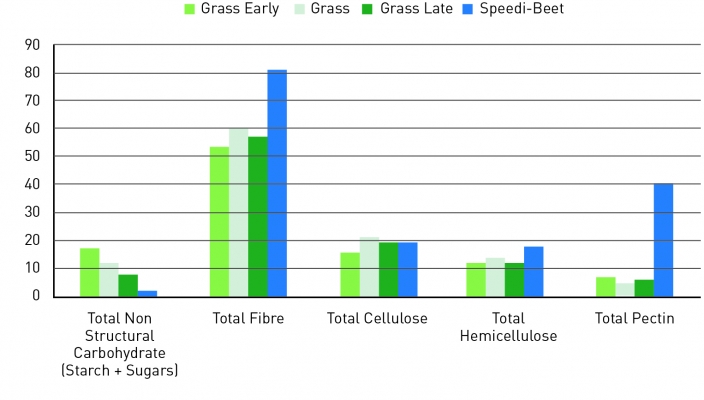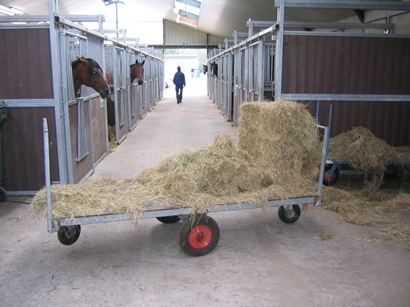BeetNote Fourage management
Manage your horse’s diet in 4 steps
When putting together the daily diet for your horse, you can use the following components:
- Roughage
- Fibres
- Concentrate
- Supplements
Roughage
The basis of any diet is roughage; a horse cannot live without roughage. As a rule of thumb you should feed 1 - 2.5% of their body weight per day in dry matter content.
Grass, hay or haylage are considered roughage. Alfalfa and straw are also considered roughage, but you need to pay attention to the energetic value.
Fibres
Feeding Beetpulp products It is not yet all that common in the Netherlands, however, it is completely normal for every British horse owner. Extra fibres in the form of a chaff, such as Pavo DailyPlus or Pavo SpeediBeet, support the total intestinal health of your horse and the digestion of nutrients is improved. In fact, giving extra fibres means giving extra food to the micro-organisms which live in your horse’s intestines. By taking good care of these good bacteria, the bacteria which can make your horse sick cannot grow and processes will stay in balance.
Concentrate stuff
It is only when your horse is being exercised to an extent that he cannot get sufficient energy from roughage and fibre that you need to feed concentrates. In essence, concentrate is purely meant as extra energy.
Supplements
Supplements can be found in all sorts and forms. Often they are produced to replenish shortages in specific situations, such as during training (for muscle build-up), during intense exercise (electrolytes) or during the stud season (enhancement of fertility). Vitamins and minerals are an exception to this. Your horse needs vitamins and minerals on a daily basis and if these are not supplied through a concentrate feed, then a vitamin and mineral supplement as a daily addition to the roughage/fibre diet is not an extravagance.
Why feed Pavo SpeediBeet as the fibre component?
Technical reports have shown that beet pulp has a unique probiotic effect. The high pectin levels are thought to stimulate the bacteria in the hind-gut which ferment fibres. This improves the overall fibre digestibility.
In the digestive process, the profile of the fibres in SpeediBeet provides the same amount of good fatty acids as good quality grass, but the production of lactic acids is lower. Which is why fibres are excellent food type for horses and ponies which are prone to laminitis. For that reason, Pavo SpeediBeet has been approved by the British Laminitis Trust.
The similar contents of cellulose and hemicellulose means that the fermentation processes in the guts remain the same when Pavo SpeediBeet is fed in addition to roughage, while the high pectin level supports the total use of fibres and release of slow energy.
The most important characteristics are: we can reduce the intake of sugar, increase the intake of fibres, increase the output of slow release energy and maintain a fibre profile which is similar to the fibre profile to which the horse is used to due to its evolution.
Dr. Tom Shurlock



